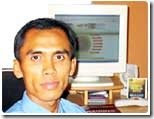INTRODUCTION An application oriented program for industry, which aims to convey the latest thinking and best practice of machinery vibration monitoring and analysis via lectures and case studies. Industrial case study examples are used throughout the program to emphasize key points and to underline the relevance and applicability of the topics being addressed. The program gives a detailed treatment of the detection, location and diagnosis of faults in rotating and reciprocating machinery, using vibration analysis. COURSE OBJECTIVES After attending the program Participants will: - Have a detailed understanding of the measurement and characteristics of vibration signals, and the ways in which vibration data can be stored and represented
- Have acquired a knowledge of vibration-based fault detection and diagnostic techniques, and the practical implementation of these techniques
- Have the knowledge to assess accurately machinery conditions, and to make detailed and reliable diagnoses for a range of common machinery and component types
TRAINING METHODOLOGY Participants will learn by active participation during the program through the use of program materials, software demonstrations, hands-on experience of vibration analysis software tools, group exercises, and discussions of “real life” case studies in their organizations. COURSE OUTLINE Vibration and it’s Measurement - Components of a vibration signal
- Vibration transducers
- Overall and spectral vibration
- Monitoring point location
- Transducer mounting
- Common symptoms
- Time and frequency domains
- Frequency domain instrumentation
- Fast Fourier transforms
- Displacement and proximity probes
- Transducer selection
Vibration Symptoms of Common Machine Faults - Looseness issues
- Signal distortion
- Harmonic content
- Inter-harmonics
- Static and dynamic balancing of rigid rotors
- Types of imbalance
- Measurement set-ups
- Single and two-plane balance procedures
- Misalignment
- Distinction between angular and lateral effects
Vibration Based Fault Detection - Vibration level classification
- ISO standards
- Peak and RMS levels
- Dynamic range
- Use of FFT analyzers
- Constant percentage bandwidth spectra
- Automated CPB spectrum comparison
- Spectral zoom
Fundamentals of Bearing and Gear Vibration - Calculation of bearing frequencies
- Pulse trains and line spectra
- Loaded element modulation
- Trending fault development
- Gear wear
- Tooth-mesh harmonics
- Ghost components
- Gear fatigue
- Modulation effects
- Bent shafts and gear misalignment
Vibration Based Fault Diagnosis - Time domain averaging
- Crest factor
- Sampling, digitizing and aliasing
- Frequency and phase response
- Band selectable analysis
- RMS and linear averaging
- Real time bandwidth and dynamic range
WHO SHOULD ATTEND - Engineers and technicians, working in application and management of maintenance
- Designers and production managers and engineers
- Young engineers who are looking for outstanding job opportunities
- Everybody who wants to broaden the knowledge or benefit from this course
Training|Seminar|Workshop|Short Course Download: Our comprehensive Training Catalog to help you find the right course for your needs. |  |
Instructor
Schedule
| | Nov 30 – Dec 4, 2009 | | | 5 days |
Venue
Tuition Fee
| Rp. | 8.450.000,- | | | per participant, excluding accommodation & tax. |
Registration
| | Send by email -or- fax to: | PT. FOCUS TRACO INDONESIA
Wisma Pakuan, Jl. Pakuan 12
BOGOR – 16143
Training|Seminar|Workshop |


Tidak ada komentar:
Posting Komentar